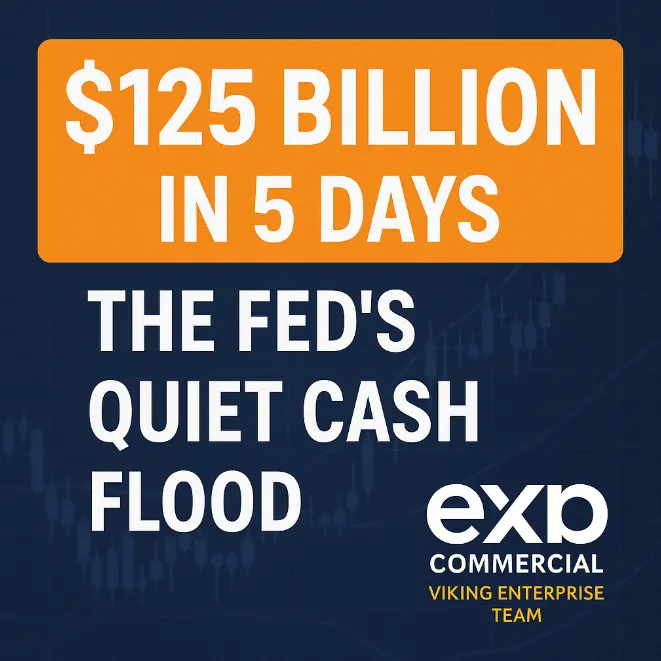Your Trusted Houston Commercial Real Estate Brokerage
Viking Enterprise LLC is part of eXp Commercial, an agent-led, cloud-based commercial real estate brokerage with agents across the globe.
Email: [email protected]
Call: (281) 222-0433
Your Trusted Katy / Fulshear & Houston Commercial Real Estate Brokerage
Viking Enterprise LLC is part of eXp Commercial, an agent-led, cloud-based commercial real estate brokerage with agents across the globe.
Looking to invest, buy, sell or lease? We can help.
Looking to invest, buy, sell or lease? We can help.
FEATURED PROPERTIES




OUR FEATURED TENANTS & CLIENTS
eXp Commercial - Viking Enterprise Team's real estate network provides unparalleled commercial real estate services to Tenants and Landlords around the Katy- Houston area. Our knowledge, experience, and reputation sets us apart from many firms.
A commercial property owner might have various plans that would necessitate the services of a commercial real estate broker. Some of the common scenarios include:
1. Selling the Property: If the owner decides it’s time to sell the property, a commercial real estate broker can help determine the market value, market the property effectively, and negotiate with potential buyers to get the best possible price.
2. Leasing Space: For property owners looking to lease out part or all of their commercial space, a broker can help find suitable tenants, negotiate lease terms, and ensure the lease agreements meet all legal requirements and serve the owner’s best interests.
3. Acquiring More Properties: Owners looking to expand their portfolio would benefit from a broker's knowledge of the market, access to listings, and negotiation skills to secure additional properties at favorable terms.
4. Property Management: While not all brokers offer this service, some commercial real estate brokers or their affiliates offer property management services. This can be particularly appealing for owners who prefer a hands-off approach or are managing properties from a distance.
5. Market Analysis: Owners considering future developments, renovations, or rebranding of their property might engage a broker for a comprehensive market analysis. This helps in understanding current market trends, the demand for different types of spaces, and potential returns on investment for various strategies.
6. Refinancing: In situations where a property owner is looking to refinance their property, a commercial real estate broker can provide valuable insights into the property’s current market value, assist in gathering necessary documentation, and even help in finding the best financing options.
7. Partnership or Investment Opportunities: Owners interested in exploring partnerships, joint ventures, or seeking investors for expansion or development projects might use a broker to find and vet potential partners or investors.
8. Consulting on Zoning and Use Changes: When contemplating a change in the use of the property or dealing with zoning issues, a broker with experience in local regulations and the specific property type can provide guidance and strategic planning assistance.
9. Exit Strategy Planning: For owners looking to plan an exit strategy from their investment, whether it’s through a strategic sale or a gradual winding down of operations, brokers can provide market insights, timing advice, and valuation services to optimize the exit process.
In any of these scenarios, the expertise and services provided by a commercial real estate broker can save the property owner time and money, while also providing access to a wider network of potential buyers, tenants, and industry professionals. Give us a call today!
Reviews

🚨 Fed Injects $125B in 5 Days — What It Means for CRE Investors 🏢
🚨 Fed Injects $125B in 5 Days — What It Means for CRE Investors 🏢
💵 $125 Billion Liquidity Surge: The Fed’s Quiet Move to Stabilize Banks ⚖️
$125 Billion in 5 Days: What the Fed’s Quiet Cash Injection Means for Commercial Real Estate
Over the last five days, the Federal Reserve has quietly pumped $125 billion into the U.S. banking system through its Standing Repo Facility (SRF) — a move that has caught the attention of economists, investors, and commercial real estate professionals alike.
On October 31, 2025, the Fed alone injected $29.4 billion in one day, allowing banks to swap Treasuries for cash and ease short-term funding stress. This rapid liquidity boost represents the largest use of the SRF since the pandemic era — and signals that while Jerome Powell remains hawkish on inflation, the Fed is playing defense to prevent cracks in the financial system.
🏦 What’s Happening Behind the Scenes
While the Fed’s balance sheet is shrinking due to ongoing quantitative tightening (QT) and massive Treasury issuance, bank reserves have fallen to just $2.8 trillion, the lowest level in four years. These repo operations serve as a safety valve — ensuring banks have the short-term cash they need to stay liquid without selling assets at a loss.
This isn’t quantitative easing (QE), but it’s certainly stealth easing. The message is clear: the Fed wants to stabilize the plumbing of the financial system without reigniting inflation.
💡 Why It Matters for Commercial Real Estate
For commercial property owners and investors, liquidity matters. The Fed’s move signals that credit markets are under strain, even if the headlines say otherwise. When short-term funding stress hits banks, lending slows — especially for higher-risk sectors like commercial real estate.
This injection could offer temporary relief by keeping lending spreads from widening further. But if this becomes a recurring pattern, it suggests the system is more fragile than it appears — and that CRE borrowers should lock in financing sooner rather than later.
📊 Market Implications
·Interest Rates: Markets are now pricing a 67% chance of a rate cut in December. If that happens, expect a wave of refinancing activity in both residential and commercial markets.
·Liquidity: Short-term stability may improve, but long-term liquidity remains uncertain.
·Inflation Risk: More liquidity could stoke inflation again if it persists, pressuring cap rates upward and asset values downward.
·Investment Strategy: Investors should monitor repo rates, Treasury issuance, and Fed commentary. These data points often foreshadow shifts in lending conditions and market sentiment.
⚠️ The Bottom Line
The Fed’s $125 billion cash injection isn’t meant to spark a boom — it’s meant to prevent a bust. For now, the banking system gets breathing room, and the financial system gains a buffer. But commercial real estate investors would be wise to stay nimble, diversify liquidity sources, and anticipate potential shifts in capital availability.
https://www.houstonrealestatebrokerage.com/
https://www.houstonrealestatebrokerage.com/houston-cre-navigator
https://www.commercialexchange.com/agent/653bf5593e3a3e1dcec275a6
http://expressoffers.com/[email protected]
https://app.bullpenre.com/profile/1742476177701x437444415125976000
https://author.billrapponline.com/
https://www.amazon.com/dp/B0F32Z5BH2
https://veed.cello.so/FOmzTty6oi9
https://creplaybookseries.billrapponline.com
https://creplaybook.billrapponline.com/
© 2023-2024 Bill Rapp, Broker Associate, eXp Commercial Viking Enterprise Team
eXp Commercial - Viking Enterprise team real estate network provides unparalleled commercial real estate services to Tenants and Landlords around the greater Katy & Houston MSA area. Our knowledge, experience, and reputation sets us apart from many firms.
A commercial property owner might have various plans that would necessitate the services of a commercial real estate broker. Some of the common scenarios include:
1. Selling the Property: If the owner decides it’s time to sell the property, a commercial real estate broker can help determine the market value, market the property effectively, and negotiate with potential buyers to get the best possible price.
2. Leasing Space: For property owners looking to lease out part or all of their commercial space, a broker can help find suitable tenants, negotiate lease terms, and ensure the lease agreements meet all legal requirements and serve the owner’s best interests.
3. Acquiring More Properties: Owners looking to expand their portfolio would benefit from a broker's knowledge of the market, access to listings, and negotiation skills to secure additional properties at favorable terms.
4. Property Management: While not all brokers offer this service, some commercial real estate brokers or their affiliates offer property management services. This can be particularly appealing for owners who prefer a hands-off approach or are managing properties from a distance.
5. Market Analysis: Owners considering future developments, renovations, or rebranding of their property might engage a broker for a comprehensive market analysis. This helps in understanding current market trends, the demand for different types of spaces, and potential returns on investment for various strategies.
6. Refinancing: In situations where a property owner is looking to refinance their property, a commercial real estate broker can provide valuable insights into the property’s current market value, assist in gathering necessary documentation, and even help in finding the best financing options.
7. Partnership or Investment Opportunities: Owners interested in exploring partnerships, joint ventures, or seeking investors for expansion or development projects might use a broker to find and vet potential partners or investors.
8. Consulting on Zoning and Use Changes: When contemplating a change in the use of the property or dealing with zoning issues, a broker with experience in local regulations and the specific property type can provide guidance and strategic planning assistance.
9. Exit Strategy Planning: For owners looking to plan an exit strategy from their investment, whether it’s through a strategic sale or a gradual winding down of operations, brokers can provide market insights, timing advice, and valuation services to optimize the exit process.
In any of these scenarios, the expertise and services provided by a commercial real estate broker can save the property owner time and money, while also providing access to a wider network of potential buyers, tenants, and industry professionals. Give us a call today!

Find the perfect location for your business.
Let us help your business succeed.

🚨 Fed Injects $125B in 5 Days — What It Means for CRE Investors 🏢
🚨 Fed Injects $125B in 5 Days — What It Means for CRE Investors 🏢
💵 $125 Billion Liquidity Surge: The Fed’s Quiet Move to Stabilize Banks ⚖️
$125 Billion in 5 Days: What the Fed’s Quiet Cash Injection Means for Commercial Real Estate
Over the last five days, the Federal Reserve has quietly pumped $125 billion into the U.S. banking system through its Standing Repo Facility (SRF) — a move that has caught the attention of economists, investors, and commercial real estate professionals alike.
On October 31, 2025, the Fed alone injected $29.4 billion in one day, allowing banks to swap Treasuries for cash and ease short-term funding stress. This rapid liquidity boost represents the largest use of the SRF since the pandemic era — and signals that while Jerome Powell remains hawkish on inflation, the Fed is playing defense to prevent cracks in the financial system.
🏦 What’s Happening Behind the Scenes
While the Fed’s balance sheet is shrinking due to ongoing quantitative tightening (QT) and massive Treasury issuance, bank reserves have fallen to just $2.8 trillion, the lowest level in four years. These repo operations serve as a safety valve — ensuring banks have the short-term cash they need to stay liquid without selling assets at a loss.
This isn’t quantitative easing (QE), but it’s certainly stealth easing. The message is clear: the Fed wants to stabilize the plumbing of the financial system without reigniting inflation.
💡 Why It Matters for Commercial Real Estate
For commercial property owners and investors, liquidity matters. The Fed’s move signals that credit markets are under strain, even if the headlines say otherwise. When short-term funding stress hits banks, lending slows — especially for higher-risk sectors like commercial real estate.
This injection could offer temporary relief by keeping lending spreads from widening further. But if this becomes a recurring pattern, it suggests the system is more fragile than it appears — and that CRE borrowers should lock in financing sooner rather than later.
📊 Market Implications
·Interest Rates: Markets are now pricing a 67% chance of a rate cut in December. If that happens, expect a wave of refinancing activity in both residential and commercial markets.
·Liquidity: Short-term stability may improve, but long-term liquidity remains uncertain.
·Inflation Risk: More liquidity could stoke inflation again if it persists, pressuring cap rates upward and asset values downward.
·Investment Strategy: Investors should monitor repo rates, Treasury issuance, and Fed commentary. These data points often foreshadow shifts in lending conditions and market sentiment.
⚠️ The Bottom Line
The Fed’s $125 billion cash injection isn’t meant to spark a boom — it’s meant to prevent a bust. For now, the banking system gets breathing room, and the financial system gains a buffer. But commercial real estate investors would be wise to stay nimble, diversify liquidity sources, and anticipate potential shifts in capital availability.
https://www.houstonrealestatebrokerage.com/
https://www.houstonrealestatebrokerage.com/houston-cre-navigator
https://www.commercialexchange.com/agent/653bf5593e3a3e1dcec275a6
http://expressoffers.com/[email protected]
https://app.bullpenre.com/profile/1742476177701x437444415125976000
https://author.billrapponline.com/
https://www.amazon.com/dp/B0F32Z5BH2
https://veed.cello.so/FOmzTty6oi9
https://creplaybookseries.billrapponline.com
https://creplaybook.billrapponline.com/
© 2023-2024 Bill Rapp, Broker Associate, eXp Commercial Viking Enterprise Team
Find the perfect location for your business.
Let us help your business succeed.
9600 Great Hills Trail, Suite 150w Austin, TX 78759 |
855.450.0324 xx255
Texas Real Estate Commission Consumer Protection Notice Texas Real Estate Commission
Information About Brokerage Services eXp Commercial LLC #9010212
Viking Enterprise LLC #9009614

Sign up to receive the latest news on property investment and commercial real estate listings.
Contact Us
901 S Mopac Expwy, Bldg 2, Suite 350 Austin, TX 78746 | 512.474.5557Texas Real Estate Commission
Consumer Protection Notice Texas Real Estate Commission Information About Brokerage Services Reliance Retail, LLC #603091
Texas RS, LLC #9003193 | RESOLUT RE Is Licensed In Louisiana #0995694083


Facebook
Instagram
X
LinkedIn
Youtube
TikTok